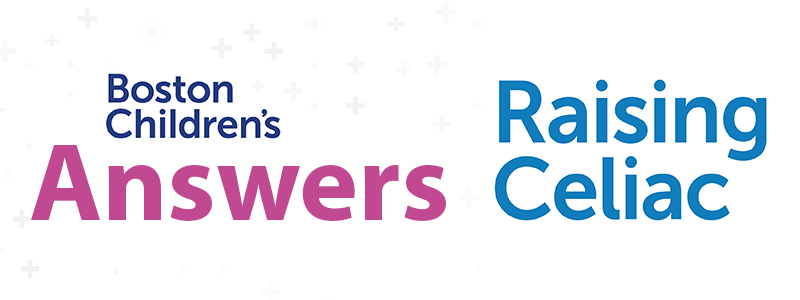
Season 2 Episode 6: Gluten-Free Schooling: Navigating Challenges and Triumphs for Children with Celiac Disease
Current Status
Price
Get Started
Course Credit
The following credits are available for this course:
| AMA PRA Category 1 Credits™ (MD, DO, NP, PA) | 0.5 hours |
| Contact Hours (Nurse) | 0.5 hours |
| CDR CPEUs (Registered Dietitian) | 0.5 hours |
| ASWB ACE Continuing Education Credits (Social Worker) | 0.5 hours |
(Note: a course evaluation is required to receive credit for this course.)
Dr. Jericho (10:38): Dr. Jericho (14:26):Click Here to View Transcript
Vanessa Weisbrod (00:02):
Welcome to season two of Raising Celiac, a podcast dedicated to raising the standard of education, awareness, and research on celiac disease and related autoimmune conditions. We have some exciting changes for this season. The Boston Children’s Hospital Celiac program has teamed up with the Celiac Disease Foundation to expand the reach of our educational podcast. Our goal is simple, to provide education to as many health providers and patient families as possible. I’m Vanessa Weisbrod, and I’ve started a new role as the Chief Education and Community Engagement Officer at the Celiac Disease Foundation. In every episode, you’ll also hear from Janice Arnold, an incredible social worker at Boston Children’s Hospital, who is the voice of our patient stories. Each month on the podcast, we will invite leading experts to dive into a hot topic related to celiac disease and look at how it impacts a patient family, the latest research and offer suggestions for health providers to manage these complex cases. Every episode of the Raising Celiac podcast is accredited by the Boston Children’s Hospital Continuing Education Department for physicians, nurses, social workers, dieticians, and psychologists. To claim your credits for listening to today’s episode, please visit DME dot children’s hospital.org/raising celiac. We’ll also drop that link into the show notes. Thank you to the Global Autoimmune Institute and the Celiac Disease Foundation for making this podcast possible. Now, let’s get started with this month’s raising Celiac patient story.
Janice Arnold (01:41):
Eliana was diagnosed with celiac disease just after her seventh birthday. Her family adjusted quickly to life with a gluten-free diet at home, becoming pros at reading food labels, researching safe brands, and creating delicious gluten-free meals. But when Eliana returned to school, things didn’t go as smoothly. Every day, Eliana packed her lunch, not because she wanted to, but because her school cafeteria didn’t offer gluten-free options. She would watch her friends line up for hot lunch while she sat alone at her desk, unzipping her lunchbox. Sometimes her classmates would ask why she couldn’t eat the same pizza or birthday cupcakes they had. It made her feel different and often left out.
Vanessa Weisbrod (02:22):
Under the Americans with Disabilities Act. Celiac disease is considered a disability because it impacts major life functions like eating in digestion. That means that students like Eliana are entitled to reasonable accommodations at school, including access to safe, gluten-free meals, and equal participation in all educational programs and activities like school lunch and classroom celebrations. Unfortunately, many schools don’t realize their responsibilities. The law requires that schools receiving federal funds provide accommodations through what’s called a 5 0 4 plan. This is a legal document that outlines the specific supports a student with a disability needs to access their education on an equal basis.
Janice Arnold (03:03):
Eliana didn’t have a 5 0 4 plan. Her parents didn’t even know such a thing existed. No one at the school had ever mentioned it, not the nurse, not the principal, not even the district’s food service coordinator. Without formal accommodations in place, there were no procedures to prevent cross contact in the cafeteria. No gluten-free snacks available for classroom parties, and no staff trained to recognize the risks of accidental gluten exposure. On Valentine’s Day, Eliana came home from school crying. Her class had had a celebration with cookies and cupcakes, but no one had brought a gluten-free treat. One of her classmates offered her a cookie saying it was probably fine, and Eliana tired of saying no. Took a bite. By the afternoon, she was doubled over in pain.
Vanessa Weisbrod (03:52):
Eliana’s story sadly isn’t unique. In a recent study published in JPGN reports, the researchers found that only 12% of children with celiac disease reported having access to gluten-free options at school, and over 30% had to bring their own treats for classroom celebrations. What’s even more concerning is that nearly 40% of students didn’t have a 5 0 4 plan, and some parents had been told that their child didn’t qualify. Despite clear legal protections,
Eliana’s parents decided it was time to take action. They reached out to her gastroenterologist who connected them with resources from the Celiac Disease Foundation. They learned how to request a 5 0 4 plan and what accommodations they could ask for access to safe gluten-free meals in the cafeteria, staff training on cross contact, a stash of gluten-free snacks kept in the classroom for unexpected celebrations and education for all of the teachers and staff that worked with Eliana during the school day. They also included provisions about hand hygiene, ensuring Eliana had access to soap and water before and after meals. Additionally, they agreed to have gluten-free art supplies and materials in the classroom.
Slowly, things began to improve, and these types of accommodations are exactly what our national guidelines recommend adopted. Just five years ago, the 2020 voluntary recommendations for managing celiac disease and learning environments outlined key recommendations for managing celiac disease at school that were agreed upon by the nation’s leading celiac disease, physicians and dieticians, school administrators, and food service providers, nurses, parents, and students. Eliana’s story reminds us how crucial it is to equip families with the tools they need to advocate and to ensure schools are held accountable for providing safe inclusive environments for children with celiac disease. But the new study highlights that many students are not getting the protections they need to successfully manage their disease. We’ll dig into the data and the bigger picture. On today’s episode of Raising Celiac today, we explore experiences of children with celiac disease at school with Dr. Hillary Jericho, a pediatric gastroenterologist, and the inaugural medical director of the Celiac Disease Program at the Lucille Packard Children’s Hospital at Stanford. Her unique balance of innovative, cutting edge research and patient-centric clinical care establishes her as an expert in the field of pediatric gastroenterology with an emphasis on the diagnosis and management of celiac disease. I’m lucky to have gotten to know Dr. Jericho well over the last two decades through our work on the Celiac Kids Collaborative, and I’m honored to have been a co-author with her on the research paper we are going to discuss today. Welcome Dr. Jericho to Raising Celiac.
Dr. Jericho (06:37):
Thank you, Vanessa. It’s a pleasure to be here. Thank you for inviting me.
Vanessa Weisbrod (06:40):
So tell us what inspired this study on gluten-free school experiences for children with celiac disease, and why is this an area that’s been historically understudied?
Dr. Jericho (06:48):
Yeah, that’s a wonderful question. So while I know many of our listeners today are familiar with celiac disease, just a quick recap that it is a lifelong condition. It does require strict adherence to a gluten-free diet, and yet schools remain one of the most challenging environments for our children that are affected by celiac disease. As you mentioned, we’ve worked closely together over many, many years now as part of the Celiac Kids Consortium, which is a national pediatric organization of medical professionals, and we’re all dedicated to researching ways to improve the lives of children with celiac disease. Despite all the growing awareness out there, there is still limited research on how the school environment impacts dietary adherence, their social experiences, and the overall wellbeing of our celiac patients. In the childhood realm, most of the celiac research historically has focused more on diagnosis and treatment rather than those daily challenges. So to address this gap, we within Celiac kids distributed surveys to celiac patients and families across the US to better understand the difficulties in securing safe gluten-free options at school.
Vanessa Weisbrod (07:58):
So what were the most surprising or concerning findings that emerged from the data? Were there any patterns that stood out to you across the different age groups or regions?
Dr. Jericho (08:07):
Yeah, that’s an excellent question. So one of the most concerning findings that we came across is that 12% of students, or rather, only 12% of students had access to gluten-free foods in their school cafeterias, which highlights a significant lack of accommodation in the school’s nationwide. Another surprising pattern we found was a large discrepancy between the responses from the parents and children on the surveys, and many parents believed their child was fully adhering to a gluten-free diet at school, but the reports from the children listed that there were frequent accidental gluten exposures. We also found that students age ranges 12 to 13, who’d been on a gluten-free diet for over two years, seemed to be at the highest risk for engaging in unsafe practices at school, possibly due to the increased social pressures and that desire to fit in with their peers.
Vanessa Weisbrod (08:59):
Yeah, the 12% of students only having access to gluten-free food and school cafeterias completely shocked me. I mean, I have personally spent a great deal of my career working with schools, and that number was really, really shocking. What does that 12% tell us about the current level of awareness and preparedness in schools across the us?
Dr. Jericho (09:21):
Yeah, so the statistic highlights that there is a significant gap in the awareness and preparedness in the school setting. So despite the fact that there are federal protections under the A DA and Section 5 0 4, many schools seem to be unaware of their obligations or they lack the resources to provide safe gluten free meals for their students with celiac disease. This suggests that some sort of systemic change really is needed, whether through better education for the school staff policy reform or increase advocacy efforts for the celiac community, schools need clearer guidance on how to safely accommodate students with celiac disease to ensure that they can fully participate in mealtimes without that fear of exposure.
Vanessa Weisbrod (10:07):
I feel really lucky. I live in Massachusetts and my son with celiac disease is 11 and can get gluten-free breakfast and lunch every single day at school. And looking at our data, I really took for granted how lucky we are to have those options available to us and how so many students across the country just don’t. Absolutely. Yeah. So how can pediatric gastroenterologists, dieticians, and primary care providers use these findings to better support families during routine visits?
Yeah, that’s a wonderful, wonderful question. So obviously providers, frontline workers, they play a key role by integrating those school related discussions into the routine visits. This means that they can ask specific questions about the child’s school environment, their meal accommodations, and their social experiences. The provider should be very proactive to educate the family and let them know their rights under the A DA and the 5 0 4 plans, and try to offer practical guidance on self-advocacy. Additionally, sharing the studies findings with local school nurses, administrators again, could help bridge that gap between healthcare and education systems. I know we at Stanford, we do have a new patient packet that has a lot of that information, and we’re very fortunate that we actually use the data from this study to ultimately get a grant to study this further in the Bay Area and implement resources for our local schools out here in California. And I hope, and I feel like the results of this study are going to help push that forward in many, many different cities and states across the us.
Vanessa Weisbrod (11:47):
Absolutely. So should discussions around 5 0 4 plans and a protections become a standard part of the education process following a celiac diagnosis? And if so, what should those conversations look like?
Dr. Jericho (12:00):
Yeah, absolutely. So every child diagnosed with celiac disease should have a discussion about their legal rights at school. Providers should educate the families on the importance of the 5 0 4 plans, which can help formalize the accommodations such as having gluten-free meals, safe classroom environments, and proper training of the staff. The conversation should be framed around empowering the families to advocate for their child’s needs and providing them with sample 5 0 4 plans can be very, very helpful, and then guiding them through the process of requesting the accommodations.
Vanessa Weisbrod (12:36):
Yeah, I also think it’s so important. California and Massachusetts are two of eight states that have universal school meals, and there are eight other states that also children have access to these things. And the whole point of these laws were to make access to meals easier and open to everybody. And so if you are a provider in one of those eight states, making sure that your patients know they can get gluten-free meals for free.
Dr. Jericho (13:03):
Yeah, absolutely. Absolutely. We’re very lucky to have that out in California too. For sure.
Vanessa Weisbrod (13:09):
So one of the interesting things in this study is that we looked at both parent and child responses and there were discrepancies between them. So given those discrepancies, how might providers help bridge communication gaps to get a more accurate understanding of what’s really happening at school?
Dr. Jericho (13:26):
Yeah, that’s an excellent question. So one strategy might be to speak directly and separately with the child from the parent during the visit. It’s going to create a safe space for that child to share their experiences in an open and frank manner. Additionally, using open-ended questions can help providers get more honest responses, and encouraging the families to check in regularly with their child about the school meals, their social situation can greatly improve that communication at home as well. If a center has the resources to involve dieticians, psychologists, social workers in those follow-up visits, that absolutely can also help to address the social pressures, the emotional struggles that children may face in managing their diet.
Vanessa Weisbrod (14:16):
For sure. So for parents who are just learning about 5 0 4 plans or feeling unsure about how to start the process, what do you recommend as their first steps?
Yeah, so the first step would be to request a formal 5 0 4 meeting with the school. It’s important to have a doctor’s note at that time to stress the medical necessity of being on a strict gluten-free diet if you have celiac disease. In addition, the parents should familiarize themselves with what the sample 5 0 4 plans look like. And oftentimes these can be provided by the medical center or online locations. They’re easy to be found. Centers such as the Celiac Foundation typically have samples of that online that families can utilize and look at. And then connecting the parents with the Celiac community as a whole can definitely provide additional guidance support to manage the struggles children may have in the school setting.
Vanessa Weisbrod (15:13):
Absolutely. So how might families use the study’s findings as evidence when meeting with school administrators to request accommodations?
Dr. Jericho (15:22):
Yeah, that’s a great question, and I hope people do use our study to help them push forward to ensure the best possible environment for their children in the school. This study provides data-driven evidence that CLX students do face significant barriers in schools. Parents can use the findings from the study to illustrate the lack of gluten-free food availability within schools, the risks of the accidental exposure and the importance of having those formal accommodations in place. Sharing these statistics can help both the school administrators understand that the gluten-free needs are not a preference, but they’re a medical necessity and reinforce urgency of implementing these accommodations to again, ensure the safest, best, and most helpful environments for their students with celiac disease.
Vanessa Weisbrod (16:14):
Yeah, for sure. I think that until recently, we didn’t have a whole lot of research in the school setting, and it made it hard for administrators who are so driven by data to see why this is a problem and what they need to do. And so I always recommend families download the research, bring in published journal articles if your school doesn’t believe it, so that they can see, yes, this is credible research and this is what we need. Absolutely.
Dr. Jericho (16:38):
Absolutely. So yes, all those patients out there listening download this article. Absolutely. Bring it to the school to back, the resources and the school environment that’s going to provide the best quality of life for your student. Absolutely.
Vanessa Weisbrod (16:53):
So the study found that students ages 12 to 13 on a gluten-free diet for more than two years were actually at the highest risk for engaging in unsafe practices. How can parents and providers work together to support adolescents during this particularly vulnerable stage of life?
Dr. Jericho (17:10):
So anybody out there with an adolescent can certainly relate to this. I have a newly 13-year-old, so definitely encountering this firsthand. But adolescents, it is a very challenging time. There’s a lot of peer pressure. There’s that desire for independence, and often that can take precedence over dietary adherence, so parents and providers can support their team by again, trying to foster open judgment-free conversations about those social challenges and the temptations to take risks. They can try to teach the adolescents self-advocacy skills to help them explain their dietary needs to those around them. They can provide realistic strategies such as bringing your own gluten-free snacks to school or researching safe dining options in advance to know that where you’re going to be is going to provide a safe environment. And then lastly, trying to connect teens with support groups or peer mentors who are also managing celiac disease. This really reinforced that they’re not alone in their experience and they can really learn and grow from one another. Here at Stanford, we were very lucky to get a gift, and we’ve been doing monthly in-person gatherings called Happy Gut Gatherings, and we just had one yesterday. It was yoga, and it was incredible. We all did yoga together, and then everyone brought their stress relieving item from home and shared, and we all learned from one another. And I think bringing the community together is such a huge part of it.
Vanessa Weisbrod (18:42):
For sure. We run it, the Celiac Disease Foundation, a monthly teen talk, and I’m always so surprised by how many students come on and it’s the first time they’ve ever engaged with another teenager with celiac disease. And so anything we can do to connect this age group to peers who they can be a support system for each other, a shoulder to lean on a text buddy to really just get through this stage of life with celiac disease is really, really useful.
Dr. Jericho (19:11):
Absolutely.
Vanessa Weisbrod (19:12):
So looking ahead, what do you see as the next steps in research or advocacy to better support students with celiac disease at school?
Dr. Jericho (19:20):
Yeah. Well, like you were saying before, sometimes the hard facts are the best way to support and convince and move forward with change. So more research certainly on the long-term effects of gluten exposure in the school setting, as well as studies on how different school policies impact adherence and the quality of life are essential. Advocacy efforts should focus on improving school meal programs and plans by increasing the funding for gluten-free options and mandating better training for the cafeteria staff. Additionally, we need stronger policy enforcement to ensure that schools are complying with the ADA and the 5 0 4 plan requirements. And really ultimately the goal is just to create an environment where children with celiac disease can thrive academically, socially, and physically without unnecessary risk.
Vanessa Weisbrod (20:13):
Absolutely. This has been such an amazing discussion, Dr. Jericho, and we are truly grateful for all of the incredible work that you’re doing, and I can’t wait to continue advancing research and education to support kids at school together. So now let’s take a step and find out where our patient Eliana is today.
Janice Arnold (20:33):
For Eliana, having these supports in place made a world of difference. Her anxiety around food started to fade. She felt more included and her health improved. Her parents often say that once they had the right information and the right team behind them, everything changed in her own words. Once I had a 5 0 4 plan, everything got so much better. It was like one day everyone just knew I had celiac disease and had gluten-free food and was watching over me. I finally felt safe.
Vanessa Weisbrod (21:02):
And now a word from the Global Autoimmune Institute.
Speaker 4 (21:06):
The Global Autoimmune Institute works to empower solutions in the diagnosis and treatment of autoimmune diseases. Through research, education, and awareness while supporting multidisciplinary approaches to health, we are thrilled to support the production of this educational podcast.
Vanessa Weisbrod (21:25):
Thank you for listening to this episode of Raising Celiac. A special thanks to the generous contributions from the Global Autoimmune Institute to make this podcast possible. A reminder to all physicians, nurses, social workers, dieticians, and psychologists to claim your continuing education credits. For listening to today’s episode, please visit DME dot children’s hospital.org/raising celiac. If you like what you heard, be sure to write a review, like and subscribe wherever you get your podcasts. For more information, check us out on social at Boston Children’s Celiac on TikTok, at Children’s Celiac, on Twitter, or at Celiac Kids Connection on Instagram. Have a great month.
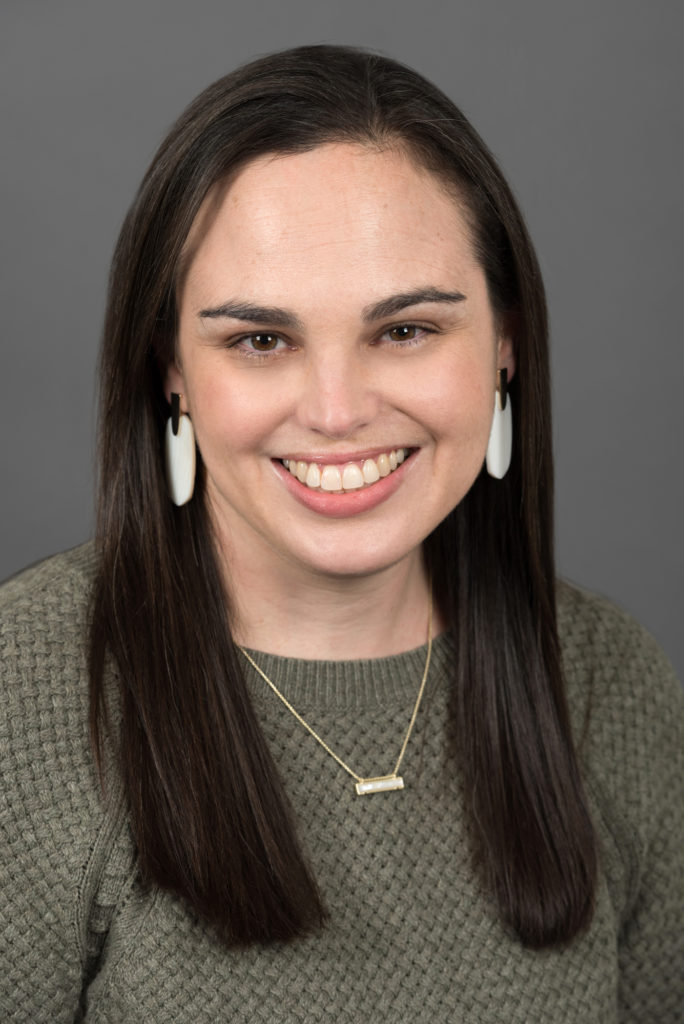
Vanessa Weisbrod
Director, Celiac Disease Program

Janis Arnold, MSW, LICSW
Clinical Social Worker, Division of Gastroenterology, Hepatology, and Nutrition
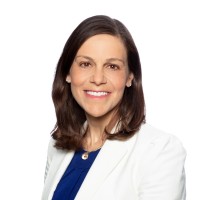
Dr. Hilary Jericho, MD
Medical Director of the Celiac Disease Program at the Lucile Packard Children’s Hospital at Stanford
When 7-year-old Eliana returns to school after her celiac disease diagnosis, she faces more than a new diet—she faces isolation and a lack of support in all elements of school life. In this episode of Raising Celiac, Dr. Hilary Jericho from Stanford discusses new research on the school experiences of children with celiac disease, highlighting the urgent need for proper accommodations that are documented in a 504 plan.
Learning Objectives:
At the conclusion of this educational program, learners will be able to:
- Understand the social and emotional challenges children with celiac disease face at school.
- Learn the importance of 504 plans in ensuring safe, inclusive school environments.
- Explore recent research on how celiac disease affects a child’s daily school experience.
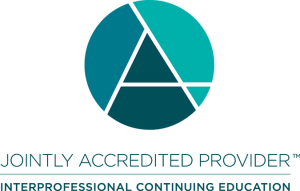
In support of improving patient care, Boston Children’s Hospital is jointly accredited by the Accreditation Council for Continuing Medical Education (ACCME), the Accreditation Council for Pharmacy Education (ACPE), and the American Nurses Credentialing Center (ANCC), to provide continuing education for the healthcare team.
Physicians
Boston Children’s Hospital designates this live activity for a maximum of 0.5 AMA PRA Category 1 Credits ™. Physicians should claim only credit commensurate with the extent of their participation in this activity.
Nurse
Boston Children’s Hospital designates this activity for 0.5 contact hours for nurses. Nurses should only claim credit commensurate with the extent of their participation in the activity.
Social Work
As a Jointly Accredited Organization, Boston Children’s Hospital is approved to offer social work continuing education by the Association of Social Work Boards (ASWB) Approved Continuing Education (ACE) program. Organizations, not individual courses, are approved under this program. State and provincial regulatory boards have the final authority to determine whether an individual course may be accepted for continuing education credit. Boston Children’s Hospital maintains responsibility for this course. Social
workers completing this course receive 0.5 ACE CE continuing education credits.
Dietician
Boston Children’s Hospital designates this activity for 0.5 contact hours for dieticians. Dieticians should only claim credit commensurate with the extent of their participation in the activity.
Disclosures
Boston Children’s Hospital adheres to all ACCME Essential Areas, Standards, and Policies. It is Boston Children’s policy that those who have influenced the content of a CME activity (e.g. planners, faculty, authors, reviewers and others) disclose all relevant financial relationships with commercial entities so that Boston Children’s may identify and resolve any conflicts of interest prior to the activity. These disclosures will be provided in the activity materials along with disclosure of any commercial support received for the activity. Additionally, faculty members have been instructed to disclose any limitations of data and unlabeled or investigational uses of products during their presentations.
The following planners, speakers, and content reviewers, on behalf of themselves, have reported the following relevant financial relationships with any entity producing, marketing, reselling, or distributing health care goods or services consumed by, or used on patients:
Vanessa Weisbrod
None
Janis Arnold, MSW, LICSW
None
Hilary Jericho, MD
None
Please see the FAQs below for common questions about how to work through a course. If you have a question or issue that is not addressed in the FAQ, please use this form to submit a help request, or if your issue is urgent, call the CME office at: 617-919-9908.
How do I navigate this course? There are two ways to access and navigate course content with the interactive table of contents: at the bottom of the main course page or in the sidebar on the right side of the page. Select the links in the table of contents to access the corresponding content. Depending on the course, access to content may be linear, in which case each content module or section can only be accessed if the prior ones are completed, or non-linear, in which case modules and sections can be accessed in any order. Use the breadcrumbs at the top of any course page to orient yourself within a course, or return to a previous course section or the main course page. How do I claim credit? If the course has been accredited, available credits will be displayed on the course home page. Select only those credits that apply to your profession, and click/tap “Apply Selection.” You may make your selection at any point while you are taking the course, or after you have completed it. How do I download a certificate? There are two ways to view/download your certificate: from within the course or from the course listing under your profile (select the document icon). In either case, you must have selected at least one available course credit type to generate a certificate. How do I view/print my transcript? You must be logged in to view your transcript. Select My Profile at the top of the page. If you do not see the transcript selector, be sure the Courses tab is selected. Select the type of credit and dates to include in your credit report. To include all credits from all time, leave the options blank. Select Download Transcript to view/download your transcript. Note each credit type in your transcripts starts a new page. How do I request a refund? Please email the CME Department to request a refund.How do navigate this course?
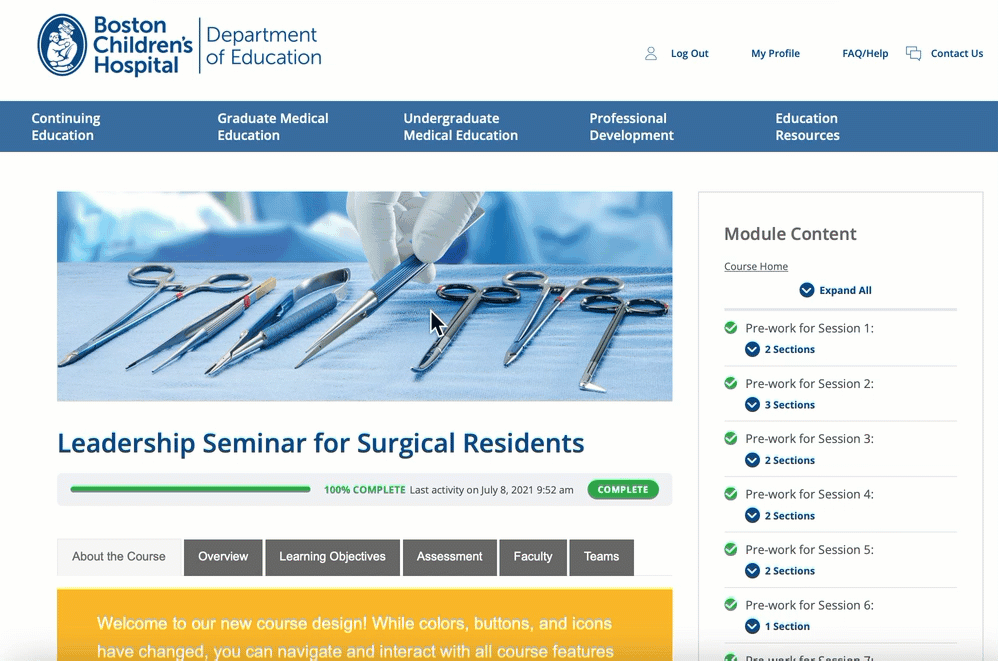
How do I claim credit for this course?
How do I download a certificate?
How do I view/print my transcript?
How do I request a refund?

